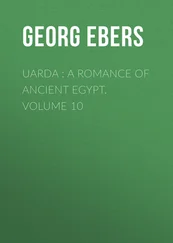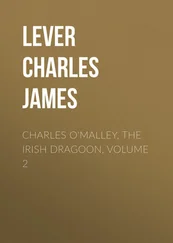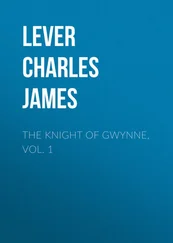Charles Bucke - Ruins of Ancient Cities (Vol. 2 of 2)
Здесь есть возможность читать онлайн «Charles Bucke - Ruins of Ancient Cities (Vol. 2 of 2)» — ознакомительный отрывок электронной книги совершенно бесплатно, а после прочтения отрывка купить полную версию. В некоторых случаях можно слушать аудио, скачать через торрент в формате fb2 и присутствует краткое содержание. Жанр: foreign_antique, foreign_prose, на английском языке. Описание произведения, (предисловие) а так же отзывы посетителей доступны на портале библиотеки ЛибКат.
- Название:Ruins of Ancient Cities (Vol. 2 of 2)
- Автор:
- Жанр:
- Год:неизвестен
- ISBN:нет данных
- Рейтинг книги:4 / 5. Голосов: 1
-
Избранное:Добавить в избранное
- Отзывы:
-
Ваша оценка:
- 80
- 1
- 2
- 3
- 4
- 5
Ruins of Ancient Cities (Vol. 2 of 2): краткое содержание, описание и аннотация
Предлагаем к чтению аннотацию, описание, краткое содержание или предисловие (зависит от того, что написал сам автор книги «Ruins of Ancient Cities (Vol. 2 of 2)»). Если вы не нашли необходимую информацию о книге — напишите в комментариях, мы постараемся отыскать её.
Ruins of Ancient Cities (Vol. 2 of 2) — читать онлайн ознакомительный отрывок
Ниже представлен текст книги, разбитый по страницам. Система сохранения места последней прочитанной страницы, позволяет с удобством читать онлайн бесплатно книгу «Ruins of Ancient Cities (Vol. 2 of 2)», без необходимости каждый раз заново искать на чём Вы остановились. Поставьте закладку, и сможете в любой момент перейти на страницу, на которой закончили чтение.
Интервал:
Закладка:
When Mr. Wood’s party arrived, they were conducted to one of the huts, of which there were about thirty, in the court of the great temple. The inhabitants of both sexes were well-shaped, and the women, though very swarthy, had good features. They were veiled; but did not so scrupulously conceal their faces as the Eastern women generally do. They paint the ends of their fingers red, their lips blue, and their eyebrows and eyelashes black 67 67 This was the custom also in the days of Ezekiel. See ch. xxiii. 40.
.
They had large rings of gold or brass in their ears and nostrils, and appeared to be healthy and robust.
The ruins were next visited by Mr. Bruce: – “When we arrived at the top of the hill,” says he, “there opened before us, the most astonishing, stupendous, sight, that perhaps ever appeared to mortal sight. The whole plain below, which was very extensive, was covered so thick with magnificent ruins, as the one seemed to touch the other, all of fine proportions, all of agreeable forms, all composed of white stone, which, at that distance, appeared like marble. At the end of it stood the Palace of the Sun, a building worthy so magnificent a scene.”
The effect on the imagination of Mr. Addison appears to have been equally lively: – “At the end of the sandy plain,” says he, “the eye rests upon the lofty columns of the Temple of the Sun, encompassed by a dark elevated mass of ruined buildings; and beyond, all around, and right and left towards the Euphrates, as far as the eye can reach, extends the vast level naked flat of the great desert, over which the eye runs in every direction, piercing the boundless horizon, without discovering a human being or a trace of man. Naked, solitary, unlimited space extends around, where man never breathes under the shade, or rests his limbs under the cover of a dwelling. A deep blue tint spreads along its surface, here and there shaded with a cast of brown; the distant outline of the horizon is clear and sharply defined; not an eminence rises to break the monotonous flat, and along the edge extends a large district covered with salt, distinguished from the rest by its peculiar colour.
“There is something grand and awe-inspiring in its boundless immensity. Like the first view of the ocean, it inspires emotions, never before experienced, unearthly in appearance, and out of character with the general fair face of nature. The eye shrinks from contemplating the empty, cheerless solitude, and we turn away in quest of some object to remove the scenes of utter loneliness, that its gloomy aspect is calculated to inspire.”
From these pages we turn with satisfaction to those of an American: – “I have stood before the Parthenon, and have almost worshipped that divine achievement of the immortal Phidias. I have been at Milan, at Ephesus, at Alexandria, at Antioch; but in none of these renowned cities I have beheld any thing, that I can allow to approach in united extent, grandeur, and most consummate beauty, this almost more than work of man. On each side of this, the central point, there rose upward slender pyramids – pointed obelisks – domes of the most graceful proportions, columns, arches, and lofty towers, for number and for form, beyond my power to describe. These buildings, as well as the walls of the city, being all either of white marble, or of some stone as white, and being everywhere in their whole extent interspersed, as I have already said, with multitudes of overshadowing palm trees, perfectly filled and satisfied my sense of beauty, and made me feel, for the moment, as if in such a scene I should love to dwell, and there end my days.”
Burckhardt speaks thus of Palmyra and Balbec: – “Having seen the ruins of Tadmor, a comparison between these two renowned remains of antiquity naturally offered itself to my mind. The temple of the Sun at Tadmor, is upon a grander scale than that of Balbec, but it is choked with Arab houses, which admit only a view of the building in detail. The architecture of Balbec is richer than that of Tadmor.”
In respect to the ruins, we must content ourselves with giving a very general account, as it would be impossible to render a minute description intelligible without the aid of plates. 68 68 In Mr. Wood’s well-known, though exceedingly scarce work, the ruins are represented in fifty-seven copper-plates, sixteen inches by twelve inches, printed on imperial paper; they are finely executed, the drawing is correct and masterly, and the engraving highly finished. The Palmyrene and Greek inscriptions on the funeral monuments, and other buildings, are copied; and besides picturesque views of the ruins, from several points of sight, the plans are generally laid down, and the several parts of the columns, doors, windows, pediments, ceilings and bas-reliefs, are delineated, with a scale by which they may be measured and compared.
Our account will be a compilation from those given by Mr. Halifax, Mr. Wood, Mr. Bruce, Mr. Addison, and other writers, who have been there.
The entire number of distinct buildings, which may still be traced, are from forty to fifty. To the northward of the valley of the tombs, on the highest eminence in the immediate vicinity, towers the ruined Turkish or Saracenic castle. It is seated on the very summit of the mountain, and surrounded by a deep ditch, cut out of the solid rock. It is said by the Arabs to have been built by Man Ogle, a prince of the Druses; its deserted chambers and passages partake of the universal solitude and silence; there is not a living thing about it; it seems to be deserted even by the bats.
From this castle is seen an extensive view round about: you see Tadmor under you, inclosed on three sides with long ridges of mountains, which open towards the east gradually, to the distance of about an hour’s riding; but to the east stretches a vast plain beyond the reach of the eye. In this plain you see a large valley of salt, lying about an hour’s distance from the city 69 69 “In this plain,” says Mr. Halifax, “you see a large valley of salt, affording great quantities thereof, and lying about an hour’s distance from the city: and this, more probably, is the valley of salt, mentioned in 2 Sam. 8-13, where David smote the Syrians, and slew one hundred and eighty thousand men; than another, which lies but four hours from Aleppo, and has sometimes passed for it.”
.
It is imagined by the Persians that this castle, as well as the edifices at Balbec, were built by genii, for the purposes of hiding in their subterranean caverns immense treasures, which still remain there 70 70 [70] “Istakar,” says Abulfeda, quoted by Sir William Ouseley, “is one of the most ancient cities in Persia, and was formerly the royal residence: it contains vestiges of buildings so stupendous, that, like Tadmor, and Balbec, they are said to be the work of supernatural beings.”
. “All these things,” said one of the Arabs to Mr. Wood, “were done by Solyman ebn Doud, (Solomon, the son of David,) by the assistance of spirits.”
But of all the monuments of art and magnificence, the most considerable is the Temple of the Sun.
This temple, says Bruce, is very much ruined; of its peristyle there only remains 70 [70] “Istakar,” says Abulfeda, quoted by Sir William Ouseley, “is one of the most ancient cities in Persia, and was formerly the royal residence: it contains vestiges of buildings so stupendous, that, like Tadmor, and Balbec, they are said to be the work of supernatural beings.”
a few columns entire, Corinthian, fluted and very elegant, though apparently of slenderer proportions than ten diameters. Their capitals are quite destroyed. The ornament of the outer gate are, some of them, of great beauty, both as to execution and design.
Within the court are the remains of two rows of very noble marble pillars, thirty-seven feet high. The temple was encompassed with another row of pillars, fifty feet high; but the temple itself was only thirty-three yards in length, and thirteen or fourteen in breadth. This is now converted into a mosque, and ornamented after the Turkish manner.
Читать дальшеИнтервал:
Закладка:
Похожие книги на «Ruins of Ancient Cities (Vol. 2 of 2)»
Представляем Вашему вниманию похожие книги на «Ruins of Ancient Cities (Vol. 2 of 2)» списком для выбора. Мы отобрали схожую по названию и смыслу литературу в надежде предоставить читателям больше вариантов отыскать новые, интересные, ещё непрочитанные произведения.
Обсуждение, отзывы о книге «Ruins of Ancient Cities (Vol. 2 of 2)» и просто собственные мнения читателей. Оставьте ваши комментарии, напишите, что Вы думаете о произведении, его смысле или главных героях. Укажите что конкретно понравилось, а что нет, и почему Вы так считаете.












